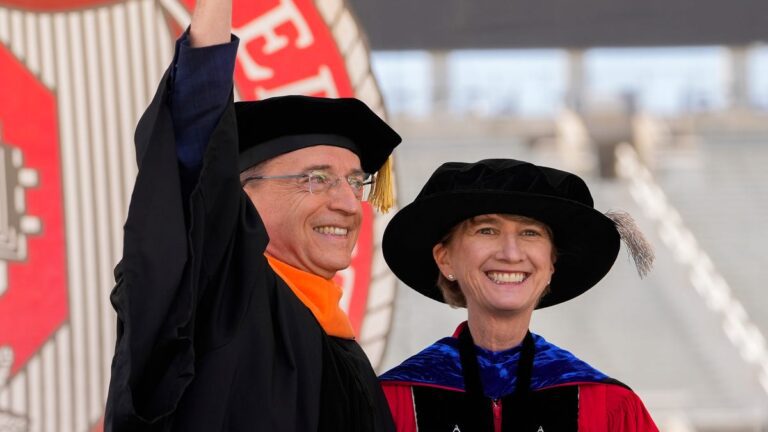Ohio University and Columbus State Community College will partner with 10 other Midwestern colleges and universities to form a network focused on microchip research and programming.
The Midwest regional network to address national needs in Semiconductors and Microelectronics will include 12 schools from Ohio, Michigan and Indiana. The group was formed after a two-day workshop in April hosted by Ohio State to discuss Intel's arrival.
In December, Intel announced its intentions to build two chip factories in Licking County to help meet the nation's growing need for domestic semiconductors and microelectronics.
Intel CEO: Company moving 'full speed ahead' on Ohio plans after CHIPS Act passes Congress
The network will work collaboratively to develop higher education solutions to “support the empowerment of the advanced semiconductor and microelectronics industry and address the industries' research and workforce needs,” officials said in a media release.
“The global turmoil that has caused significant shortages has underscored the need for significant investment and growth in the domestic semiconductor industry for the U.S. to remain competitive.” Ohio State President Christina M. Johnson he said.
Christina Johnson: Ohio State president claims 'big wins' during State of the University address
Johnson said this “powerhouse network” will advance scientific research and economic development to “make our Silicon Heartland vision a reality.”
Six other Ohio universities, colleges included in the microchip network
Partner schools include: Case Western Reserve University, Lorain County Community College, Michigan State University, Purdue University, Sinclair Community College, University of Cincinnati, University of Dayton, University of Michigan, University of Notre Dame and Wright State University.
The institutions “will leverage existing research, teaching and experiential learning elements, capabilities and expertise in the region and develop the collective capacity to support the domestic development of strong semiconductor and microelectronics and supply chain innovation ecosystems,” the news release said.
Chip Law: What the US Senate OK means for Intel
While these schools are the founding members of the network, it is intended to be open and grow beyond these original institutions. Dorota Grejner-Brzezinska, Ohio State's vice president for the Office of Knowledge Enterprise, will lead a steering committee with representatives from all 12 schools.
Grace Wang, Ohio State's executive vice president for research, innovation and knowledge, said the network recognizes there is a global competition for talent to remain at the forefront of research and development.
“Only through cooperation can we truly realize the promise this opportunity holds,” Wang said.
What will the Midwest microchip network do?
Initial activities for the network include:
• Develop a common, secure information sharing platform to facilitate the identification of expertise, equipment, facilities and curricula of interest to facilitate joint programming, research and/or outreach initiatives across the network.
• Encourage regional collaborations and promote workshops around opportunities to pursue funding that will increase regional capacity to support identified needs in the semiconductor and microelectronics ecosystems.
• Develop pilot mechanisms to link existing research, facilities and study/training programs across the region to optimize their use to address regional needs and opportunities.
Intel in Ohio: Intel expects no immediate benefits from the $52 billion CHIPS Act
Johnson and Columbus State President David T. Harrison will join some of their higher education peers on Tuesday at the White House for a signing ceremony for the CHIPS and Science Act.
Sheridan Hendrix is a higher education reporter at the Columbus Dispatch. You can reach her at shendrix@dispatch.com. You can follow her on Twitter at @sheridan120. Subscribe to her Mobile Newsroom newsletter here and its educational newsletter here.

